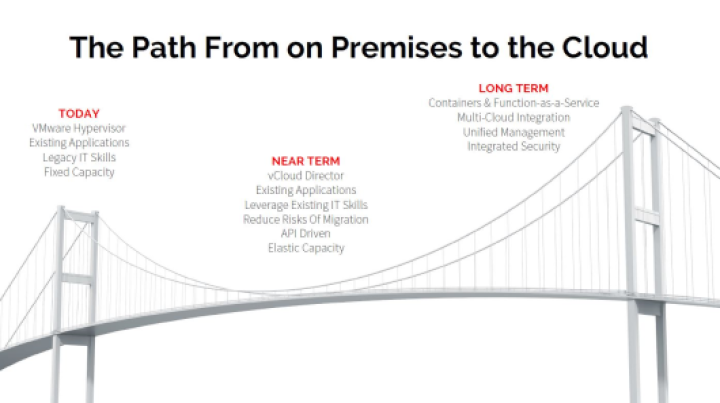To take advantage of the inherent benefits of the Cloud (e.g. reduced IT costs, scalability, flexibility, availability), it has become commonplace to migrate legacy applications and business processes to the hyperscale cloud. While some organizations have found success with this strategy, moving to the hyperscale cloud has introduced new problems for many businesses, such as:
IT Skills Gap – Running applications in hyperscale cloud platforms requires new skill sets. Familiarity with VMware provides little or no value when lifting and shifting applications to hyperscale. Developing hyperscale cloud skill sets can be slow, expensive, and difficult to maintain as the hyperscalers continuously release new products and functionality.
Unpredictable Performance – AWS and Azure both deliver servers as instances, one server at a time. These instances are bought based on size and performance, and surprisingly, the most expensive and high-performance instances often don’t measure up to on-premises hardware throughput. End users are usually the first to complain as their applications are slowed down after a move to a hyperscale cloud. In extreme cases, the performance issues affect business throughput, company reputation, and profitability.
Fluctuating Costs – Both AWS and Azure charge for data traveling one-way. Few organizations had any knowledge of how their on-premises applications behaved on the local area network, so a move to the hyperscale cloud sometimes resulted in huge, unexpected telecom costs for network traffic from the application to the end user.
Wasted Time & Effort – Businesses don’t move applications and business processes to the cloud to spend more time on day-to-day management and operations! Unfortunately, this is the situation many organizations find themselves in if (and when) their legacy applications don’t run well on hyperscale platforms. In the scenario of application-cloud mismatch, it can require considerable time and effort just to decipher the “optimal” instance type for a specific legacy application. What’s more… finding the “optimal” hyperscale environment for a legacy application typically requires over-provisioning of compute resources for the sake of redundancy – which leads to more cost overruns.
On-Premises – Hyperscale – How to Bridge the Gap
To eliminate these hyperscale challenges while preserving the benefits inherent to the cloud, a growing number of organizations are opting for purpose-built enterprise cloud platforms built on top of the VMware cloud infrastructure stack. These turnkey IaaS solutions effectively bridge the gap between traditional, on-premises environments and the hyperscale cloud.

In this context, “Enterprise Cloud” is defined as a VMware-based cloud infrastructure that provides compute, memory, storage, networking, data protection and other services that are analogous to the virtual systems that have existed on-premises for more than a decade. Not only do these solutions check all the “on-prem” boxes, they also provide a hyperscale-like cloud experience with features like API-driven automation tooling, support for microservices, and easy-to-use, web-based management.
Organizations running VMware-based workloads on-premises or in the hyperscale cloud, can realize the following benefits with a VMware-based Enterprise Cloud platform:
Familiar Skillsets - Organizations that have VMware skills in-house benefit from the familiarity and comfort of enterprise cloud.
Performance - The best enterprise cloud providers build high performance into their clouds to deliver better speeds and more resiliency to cloud adopters.
Cost Control - Large-scale enterprise cloud providers offer flatter, more predictable spending models by delivering resource pools rather than individual instances of servers. The best enterprise cloud providers use dedicated connections or secure Internet connections to manage or eliminate variable telecom costs.
Comfort and Simplicity - And because the enterprise cloud delivers resiliency at the hardware level rather than expecting organizations to rewrite applications or become scripting and automation wizards, the most critical business applications can be migrated and run, often faster and with no changes to the applications themselves.
Additional features - The best enterprise cloud providers offer additional features like disaster recovery as a service, tools for operations management, and APIs for automation, and support microservices and Kubernetes-orchestrated containerization.
Is your organization looking to bridge the gap between on-premises virtual systems and the hyperscale cloud? Watch this short video interview to see how Homes.com reduced costs and streamlined operations with Expedient Enterprise Cloud.
